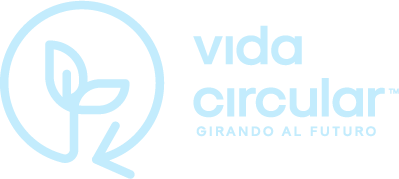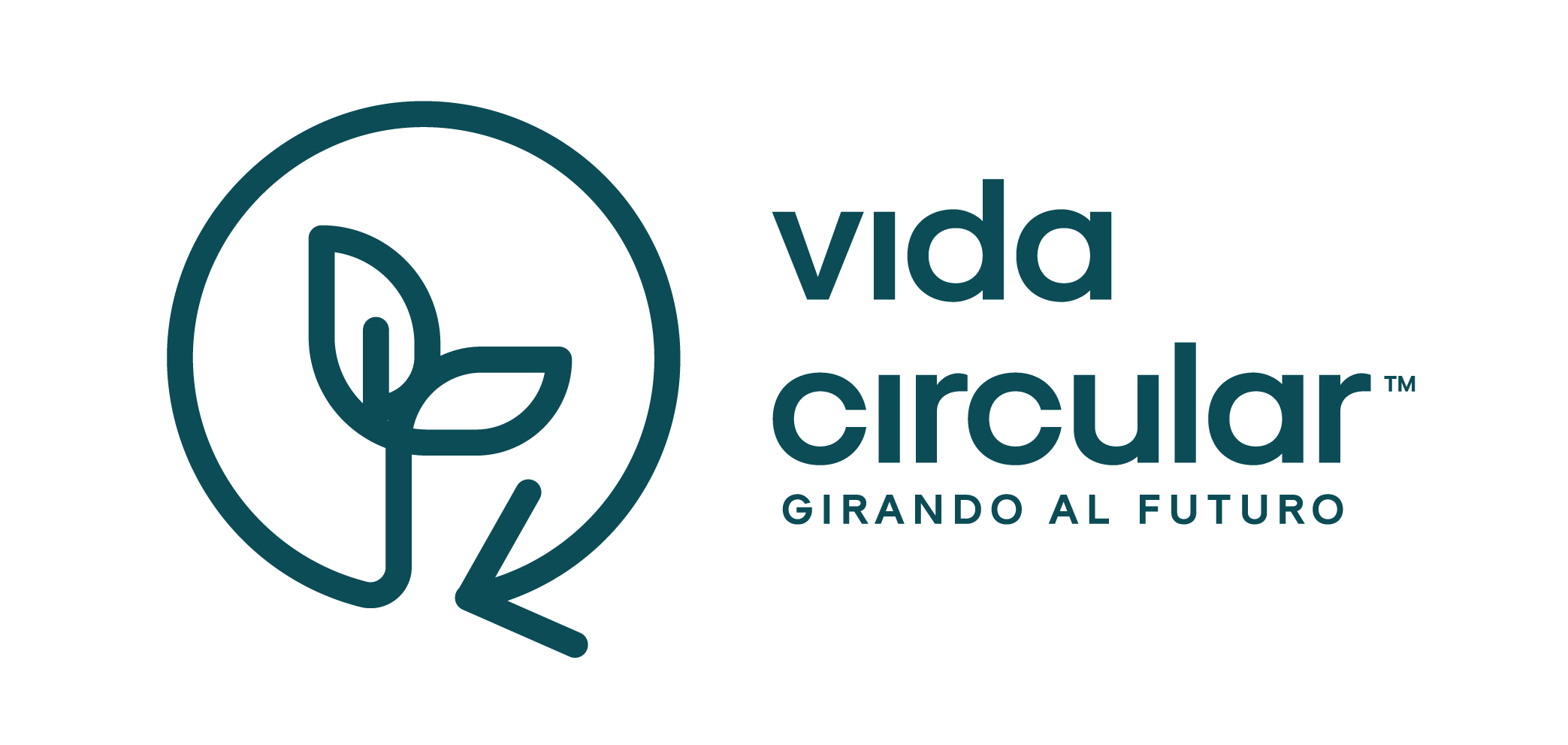
PET (polyethylene terephthalate) plastic is one of the most widely used materials in beverage and food packaging due to its lightness, durability and safety. However, one of the most outstanding characteristics of PET is its ability to be recycled, allowing each bottle to be given a new life. At Vida Circular, we believe that recycling is a key element in the circular economy and in reducing environmental impact.

What is PET and why is it important to recycle it?
PET is a type of plastic that is highly valued for its versatility and strength. It is mainly used to make beverage bottles, food packaging and textiles. PET is a 100% recyclable material, which means that it can be processed and converted into new products, such as new bottles, textile fibers and food packaging. Every year, millions of tons of PET are produced worldwide, and recycling it has a positive impact on reducing plastic waste. Recycling one ton of PET saves around 2.5 tons of CO2 emissions compared to the production of virgin plastic (PlasticsEurope). In addition, PET recycling reduces the consumption of energy, water and natural resources.
The PET Recycling Process: Step by Step
PET recycling is a detailed process that ensures that this material can be reused for the production of new, high-quality products. Below, we explain each step of the process:

1
Collection
PET bottles are collected through various channels, such as municipal recycling programs, collection points and collection at industrial plants. The participation of consumers is crucial here, as they must correctly separate PET bottles to prevent them from being contaminated with other waste.

2
Ranking
Once they arrive at the recycling plant, the bottles go through a sorting process, which can be manual or automated. They are separated according to color (clear, green, amber, etc.) and type of plastic. This sorting is key, as different colors and types of PET are recycled in different ways and affect the quality of the final product.

3
Cleaning
The sorted bottles undergo intensive washing to remove labels, caps and food or liquid residues. This step is crucial to prevent contaminants from affecting the quality of the recyclate. Cleaning also prevents PET from degrading during the recycling process.

4
Shredding
After cleaning, the bottles are crushed into small pieces called plastic flakes. These flakes are more manageable and can be easily processed at later stages.

5
Flake Washing
The flakes resulting from shredding are washed again to remove any remaining impurities. This ensures that the material is completely clean and free of contaminants that could affect the quality of the recyclate.

6
Fusion and Extrusion
Clean PET flakes are melted at high temperatures and then extruded to form pellets or fibers. These pellets are the raw material used to create new products, from bottles and packaging to polyester clothing fibers.

7
Reuse
Finally, the recycled PET pellets are distributed to various industries to be used in the manufacture of new products. This process reduces the demand for virgin plastic and closes the PET life cycle, contributing to a more sustainable circular economy.


PET Recycling Plants in Mexico
In Mexico, there are recycling plants that process used PET bottles and transform them back into food-grade PET bottles. This means that the recycled resin generated in these plants goes through a purification process that converts it into a resin that is suitable for contact with food and beverages again. This bottle-to-bottle cycle demonstrates how PET can be recycled over and over again without losing its quality, contributing to a significant reduction in plastic waste and the creation of sustainable products. In Mexico, recycling plants have helped close the life cycle of PET, and more and more companies are joining these initiatives to continue moving towards a circular economy. So do your part! By correctly separating your PET bottles, you contribute directly to this recycling process and help reduce the environmental impact.
Recycling
The importance of waste separation at home
It is essential to understand that we as a society play a fundamental role in triggering recycling, separation at home is still key. The reason is that when we separate PET bottles correctly, we prevent them from becoming contaminated with other waste, especially with organic materials such as food waste. Contamination with this waste can seriously affect the recycling process, as dirty bottles can become unusable for recycling.
Here are some important tips for separation at home:
No need to wash bottles
Although some people believe that they should wash bottles before recycling them, this is not necessary. In the recycling plants, the bottles go through an intensive washing process, so it is sufficient to make sure that there are no liquid or food residues on them.
Do not separate the covers
It is also not necessary to separate the cap from the bottle. In recycling plants, caps are processed together with bottles, and the difference in material is handled during the recycling process.
Compacts the bottles
Compacting bottles so that they take up less space is a recommended practice. This makes them easier to transport and store both at home and at recycling points.
Clean and well separated PET containers ensure that the material can be fully utilized, contributing to more efficient and sustainable recycling. In doing so, we are helping to preserve a valuable resource and facilitating its reincorporation into the production cycle.
The impact of PET recycling on the environment
PET recycling has a significant impact on reducing the carbon footprint and reducing plastic waste. According to a study by the Ellen MacArthur Foundation, for every ton of PET recycled, approximately 2 .5 tons of CO2 are saved , and energy consumption is reduced by up to 50%.
In addition, by recycling PET, we prevent large quantities of plastic from ending up in landfills or in the oceans. Instead of contributing to pollution, we recycle plastic to give it a second life and prolong its use.
Corporate commitment in Mexico and Central America
In Mexico and Central America, leading companies in the plastics recycling and manufacturing industry have implemented PET recycling programs that have made great strides. Together, these initiatives have made it possible to recycle millions of PET bottles each year. In 2023, Mexico recovered 63% of the PET produced, positioning it as one of the leading PET recycling countries in Latin America (Ecoce). This has not only generated environmental benefits, but also economic opportunities, such as the creation of jobs in the recycling sector.
What Can You Do?
Every person can make a difference by properly separating their waste at home, school and office. Here are some simple steps you can take to help:
Correct separation
Be sure to separate PET bottles from other waste and dispose of them at appropriate recycling points.
Do not wash or separate lids
It is not necessary to wash the bottles or separate the caps; the recycling plant takes care of this process.
Compact
Compacts the bottles so that they take up less space and facilitate transportation.
Supporting recycled products
Opt for products that are made from recycled materials, such as clothing and bottles made from recycled PET.
Transforming the world with every action, every bottle recycled is an opportunity to reduce environmental impact and foster a more sustainable circular economy. By recycling, you too contribute to giving each bottle a new life.


